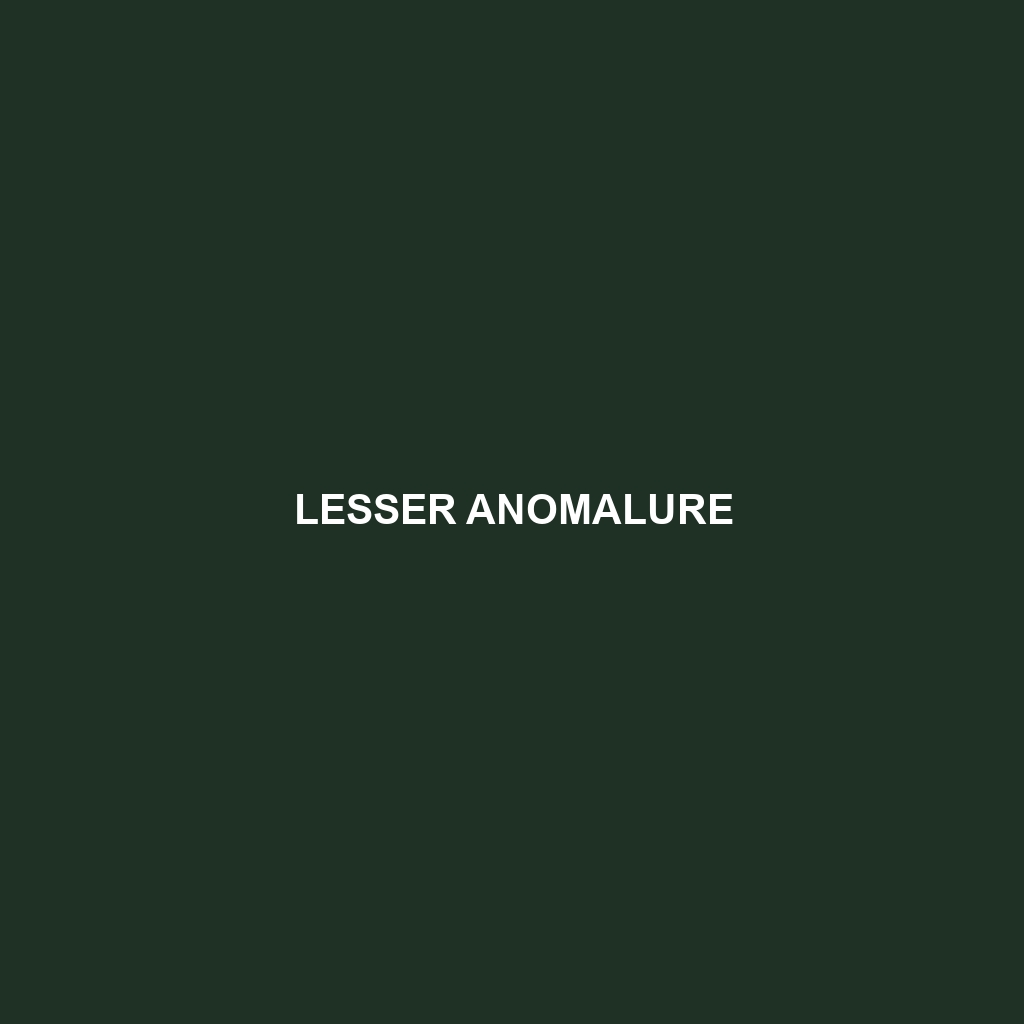Lesser Anomalure (Scientific Name: )
Habitat:
The Lesser Anomalure is primarily found in the lush rainforests of Central and West Africa. This species thrives in humid, tropical environments characterized by dense vegetation, particularly in areas rich with fruit-bearing trees and foliage. Its geographic range extends across countries like Cameroon, Gabon, and the Republic of Congo, where the warm climate and abundant resources support its habitat needs.
Physical Characteristics:
The Lesser Anomalure is a small to medium-sized mammal, averaging around 25 to 40 centimeters in length, including its long, bushy tail, which can add an additional 20 to 30 centimeters. The fur is typically a striking brownish-gray color with a creamy underbelly. One of its most distinctive features is the large, forward-facing eyes, which provide excellent night vision, allowing it to navigate its nocturnal lifestyle. Its elongated body and unique patagium (a membrane connecting the limbs) enable it to glide gracefully between trees, making it an agile arboreal creature.
Behavior:
This species exhibits primarily nocturnal behavior, becoming active during the night to forage for food and interact with other members of its species. Lesser Anomalures are known for their social structures, often living in small family groups. They communicate through a variety of vocalizations and scent markings to establish territory and bond within their group. Their gliding ability not only aids in locomotion but also plays a crucial role in escaping predators.
Diet:
The diet of the Lesser Anomalure is predominantly frugivorous, meaning they primarily consume fruits, but they also enjoy a range of other plant materials such as flowers and leaves. Additionally, they may eat insects and small invertebrates, providing a balanced diet rich in nutrients. Their feeding habits are crucial for seed dispersal, thus contributing to the health of their rainforest habitat.
Reproduction:
Breeding typically occurs during the wet season, with females giving birth to one or two offspring after a gestation period of approximately 50 to 60 days. The young are born fully furred and with their eyes open. Parental care is essential in the early stages, as the mother feeds and protects the young until they are capable of foraging independently. Notably, the bonding between mothers and their offspring is strong, with the young remaining in the family group for an extended period.
Conservation Status:
The Lesser Anomalure is currently classified as **vulnerable** on the IUCN Red List. The primary threats to their population include habitat loss due to logging, agriculture, and changes caused by human activities. Conservation efforts are crucial to ensure that their populations remain stable in their native habitats.
Interesting Facts:
One fascinating aspect of the Lesser Anomalure is its remarkable ability to glide up to 60 meters from tree to tree. This adaptation not only aids in escaping predators but also helps in navigating through the dense forests in pursuit of food. Additionally, they have been noted to be quite playful, engaging in various social interactions that resemble play behavior.
Role in Ecosystem:
The Lesser Anomalure plays an essential role in its ecosystem as both a seed disperser and a prey species. By consuming fruits and dispersing their seeds, they aid in maintaining the biodiversity of their rainforest habitat. Furthermore, their presence contributes to the complex food web, where they serve as a food source for larger predators, thus highlighting their ecological importance.
